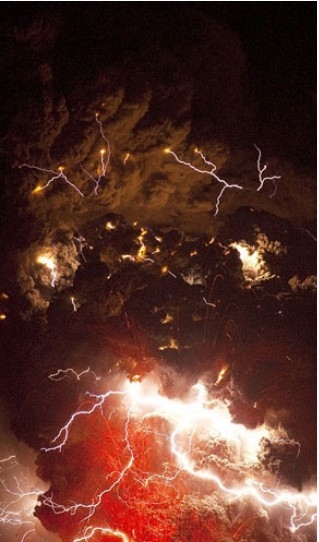
Science and Technology Animal behaviour Drip-feeding
科技 動物行為 滴定進食
Ecology raids the techniques of chemistry
生態(tài)學(xué)里應(yīng)用上了化學(xué)技術(shù)。
BIOLOGISTS are sometimes accused of physics envy—and there is truth in this accusation. The essential fuzziness of biological systems can never be captured by the precise, mathematically based experiments of something like the Large Hadron Collider. Between physics and biology on the spectrum of fuzziness, though, lies chemistry. And a group of researchers led by Carolyn Nersesian of the University of Sydney has just borrowed one of chemistry's most elegant techniques, titration, to answer a pressing ecological question: how do animals choose where to feed?
生物學(xué)家們常常被認為非常嫉妒研究物理學(xué)的人(事實上確實如此)。他們永遠不可能通過像大型強子加速碰撞那樣精確、量化的實驗來揭示生物學(xué)里的一些關(guān)鍵性的奧秘。但是在這種奧秘的"兩極"——物理學(xué)和生物學(xué)之間還有化學(xué)。最近由悉尼大學(xué)的卡洛琳·涅爾謝相帶領(lǐng)的一組研究人員借用化學(xué)里一種非常精妙的技術(shù)——滴定法來解決一個迫待回答的問題:動物們?nèi)绾芜x擇覓食場所。
Titration, to remind those who dozed through their chemistry lessons, is a way of working out the concentration of a substance in a solution. A reagent of known concentration is dripped (or titrated, to use the term of art) into the unknown solution in the presence of an appropriate indicator molecule (for example litmus, in the case of a reaction between an acid and an alkali). When the tipping point comes, and all of the unknown reagent has reacted, the solution changes colour. The unknown concentration can then be calculated from the amount of known reagent used.
滴定法(為了給那些在化學(xué)課上打過瞌睡的同學(xué)們提個醒)是一種計算溶質(zhì)在溶液中的濃度的方法。在某種特定的指示分子的參與下(例如,酸溶液和堿溶液的反應(yīng)中我們使用石蕊指示劑),將一種已知濃度的溶液滴到(專業(yè)術(shù)語叫滴定)未知溶液中。當?shù)味ńK點到來時,所有的未知溶液全都完成了化學(xué)反應(yīng),溶液的顏色就會發(fā)生變化。然后未知溶液的濃度就可以通過被消耗掉的已知溶液的體積計算出來。
In Dr Nersesian's titration the litmus was a species called the brushtail possum. The two reagents were predators and poisons. In the wild, possums feed mainly on eucalyptus trees. Feeding in trees this way also keeps them safe from ground-based predators, such as foxes. They frequently have to shift from tree to tree in search of non-poisonous leaves, though, because a tree that is being browsed starts manufacturing toxins. Dr Nersesian reasoned that there is probably a measurable point at which a plant becomes so toxic that possums prefer to take their chances with the predators on the ground—and she realised this was a perfect opportunity to do an ecological titration.
涅爾謝相博士的滴定實驗中的"石蕊指示劑"是一種叫帚尾袋貂的動物。那兩種溶液是"獵食者"和"有毒物"。在野生環(huán)境下,袋貂主要以桉樹葉為食。生活在樹上也能讓它們安全地遠離地面上的那些獵食者——例如狐貍。但是他們還得經(jīng)常從一棵樹上換到另一棵樹上去尋找那些沒有毒的葉子。因為一顆樹如果被它們吃久了就會自動分泌毒素。涅爾謝相博士認為可能當植物中的毒素達到一個量值的時候,袋貂會選擇冒著被獵食的風(fēng)險(途經(jīng)地面換一棵樹覓食),然后她就意識到這是一個應(yīng)用生態(tài)滴定法絕好的機會。
As she reports in the Journal of Animal Ecology, she attempted to imitate the distinction between trees and ground by giving eight possums the opportunity to feed in either of two enclosures. In one, cover was created with eucalyptus branches and light levels were kept low, mimicking an arboreal habitat. Here, the food was sometimes spiked with cineole—a poison often found in eucalyptus leaves. In the other enclosure, the food was always untarnished. However, no cover was provided and fox scent, in the form of faeces and urine, was scattered liberally around, mimicking conditions on the ground.
她發(fā)表在動物生態(tài)學(xué)報上報告中寫道:她通過給8只袋貂兩種桉樹來選擇覓食來模擬樹上和地面的區(qū)別。一棵桉樹上,有特意放置的桉樹枝來遮擋,光照強度也很低,模擬出適合樹棲動物習(xí)性的環(huán)境。但是,這種樹上的葉子有時含有桉樹腦——桉樹葉中常見的毒素。另一棵桉樹上,葉子總是無毒的,但是,沒有樹枝的遮擋。而且通過將一些狐貍的"蹤跡",例如狐貍的臉譜尿液隨意四散在周圍,來模擬地面環(huán)境。
To start with, when the level of cineole was low, possums preferred the first enclosure. But as the drip of the titration went up, from 0% to 1% to 2% to 5% and ultimately to 10% of the food being cineole, their behaviour changed. It was not quite the sudden shift from litmus red to blue of an acid being neutralised by an alkali, but it was not far off.
開始桉樹腦的濃度很低,袋貂都喜歡第一棵桉樹。但是隨著滴定程度的上升,食物中的桉樹腦含量從0%到1%到2%到5% 到最終的10%,它們的行為開始出現(xiàn)變化。雖然不是完全像酸溶液完全被堿溶液中和時石蕊試劑突然從紅變藍那樣迅速,但是也差不太多。
When the food was toxin-free, the possums spent an average of 40 minutes of every hour eating safely under treelike cover and only 20 minutes in the risky, ground-like enclosure, and that scarcely changed for 1% and 2% cineole. The switch began at 5%, and by the time the cineole level had reached 10% the ratio of time the animals spent in the two enclosures had reversed itself—presumably reflecting, though this remains to be tested, the point at which they change trees in the wild.
當葉子無毒時,袋貂們每小時用平均40分鐘的時間在樹枝狀的遮蔽物下安全的進食。而在危險的類地面的桉樹上只待20分鐘,這時的桉樹腦含量變化在1%到2%之間。分界點出現(xiàn)在5%,當桉樹腦含量達到10%,這些小動物們呆在這兩顆桉樹上的時間比完全顛倒過來了——這大致上能反映在野外環(huán)境下它們換樹進食時的毒素量值,當然這還有待驗證。
Though foxes are of recent introduction in Australia (having been brought for sport by British settlers), many marsupial predators, now extinct, were present before the arrival of man in both his Aboriginal and his European forms, so the ecological system of plants, herbivores and carnivores in the eucalyptus forests would probably not have been that different in the evolutionary past. A neat illustration, then, of co-evolution between three different parts of an ecosystem—and of the value, even in biology, of precise measurement.
雖然狐貍是很晚才被引進到澳大利亞的(由英國移民出于狩獵運動的目的而帶來的),但是在原始人或者歐洲人到來之前還有很多其他的有袋動物的獵食者(現(xiàn)在都滅絕了)。所以桉樹林生態(tài)系統(tǒng)中的那些植物,素食動物肉食動物,與進化史中較早的生態(tài)系統(tǒng)相比,差別可能也沒有那么大。這樣一來生態(tài)系統(tǒng)中的三個不同角色的(植物,素食動物,肉食動物)協(xié)同進化的一張清晰的圖表呈現(xiàn)出來。在生物學(xué)里也能進行精確的量化計算,這種嘗試的價值是巨大的。











